The second half of our end-of-summer adventure was something new to us; a Packrafting trip. We have seen Packrafts in various places for a while now and finally found a way to test them out for a few days. After a few days hiking the Greenstone Caples Track, we made our way further south to Te Anau ready for our adventure.
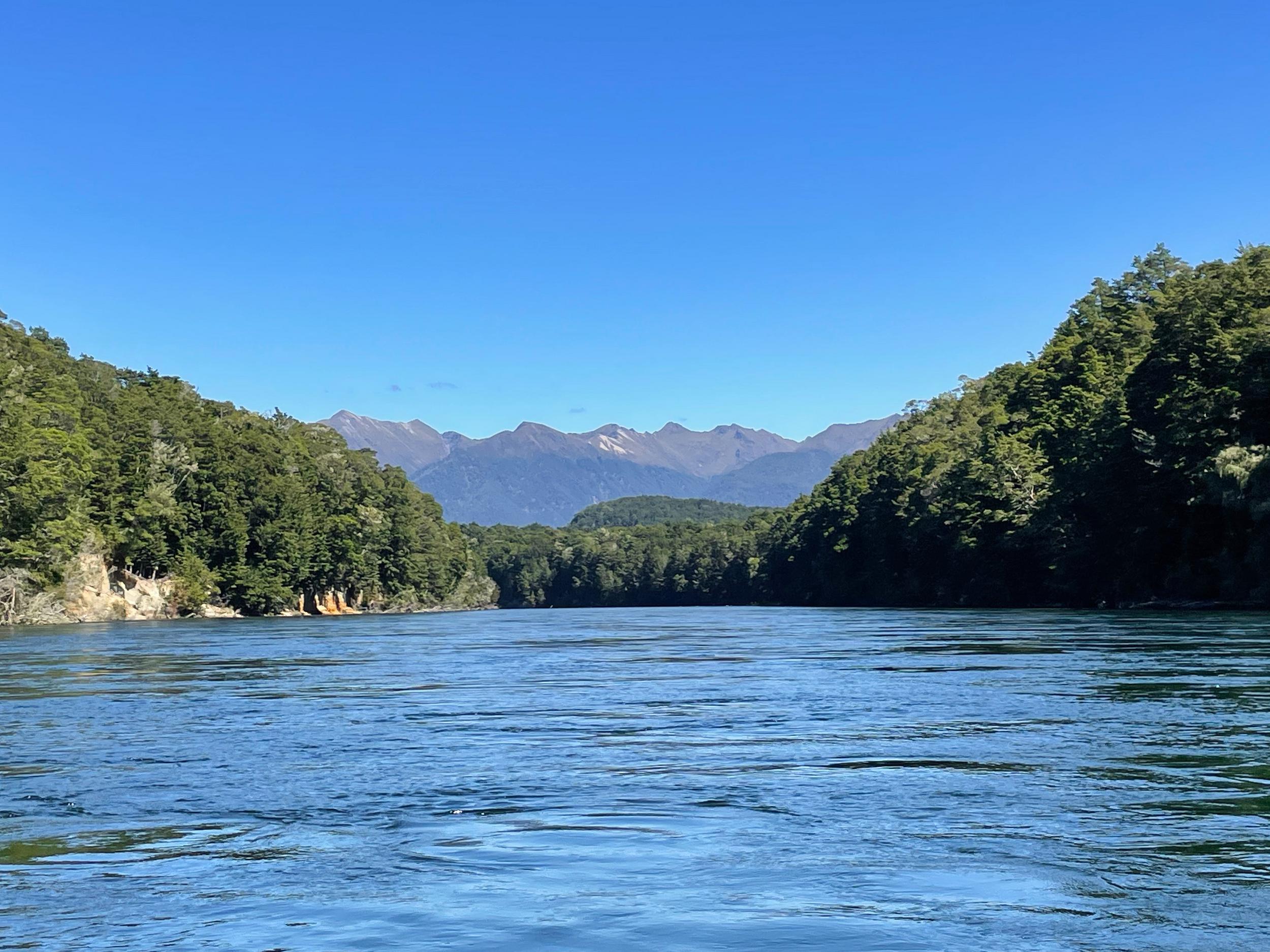
Despite Fiordland’s reputation as being pretty wet, seeing around seven metres of rainfall a year, we managed to pick three of the 165 days of the year when it didn’t rain! After spending some time with an instructor getting familiar with the boats, we set off down the Waiau River towards Lake Manapouri.
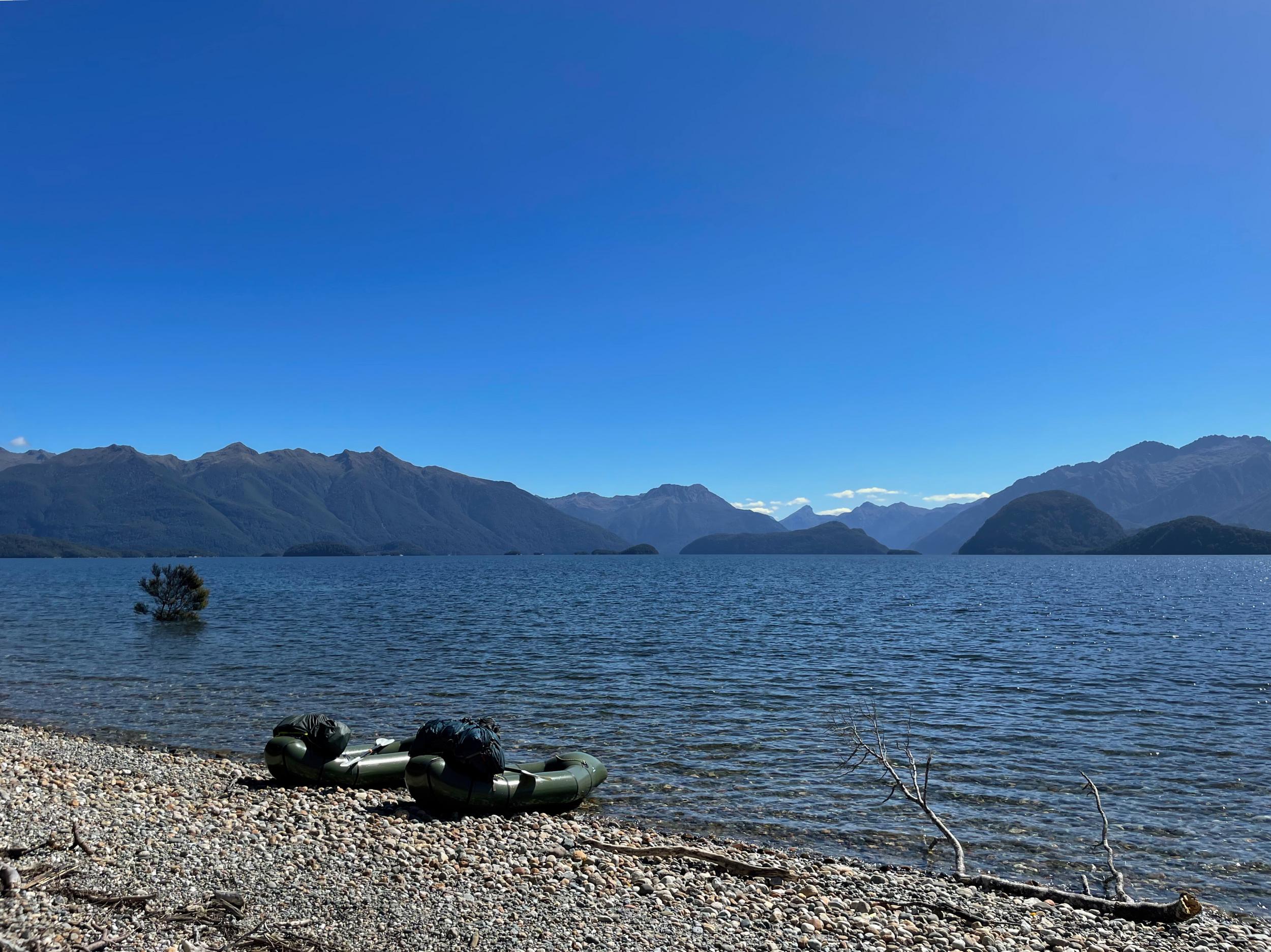
Taking the Packrafts down the river was a great way to start our trip, there was just enough current that we didn’t have to paddle too hard, but there were enough rapids and other hazards in the water that we needed to pick our line quite carefully at times. After a pleasant few hours we popped out into Lake Manapouri and after a little more paddling around a peninsula we found a long quiet beach to camp for the night.
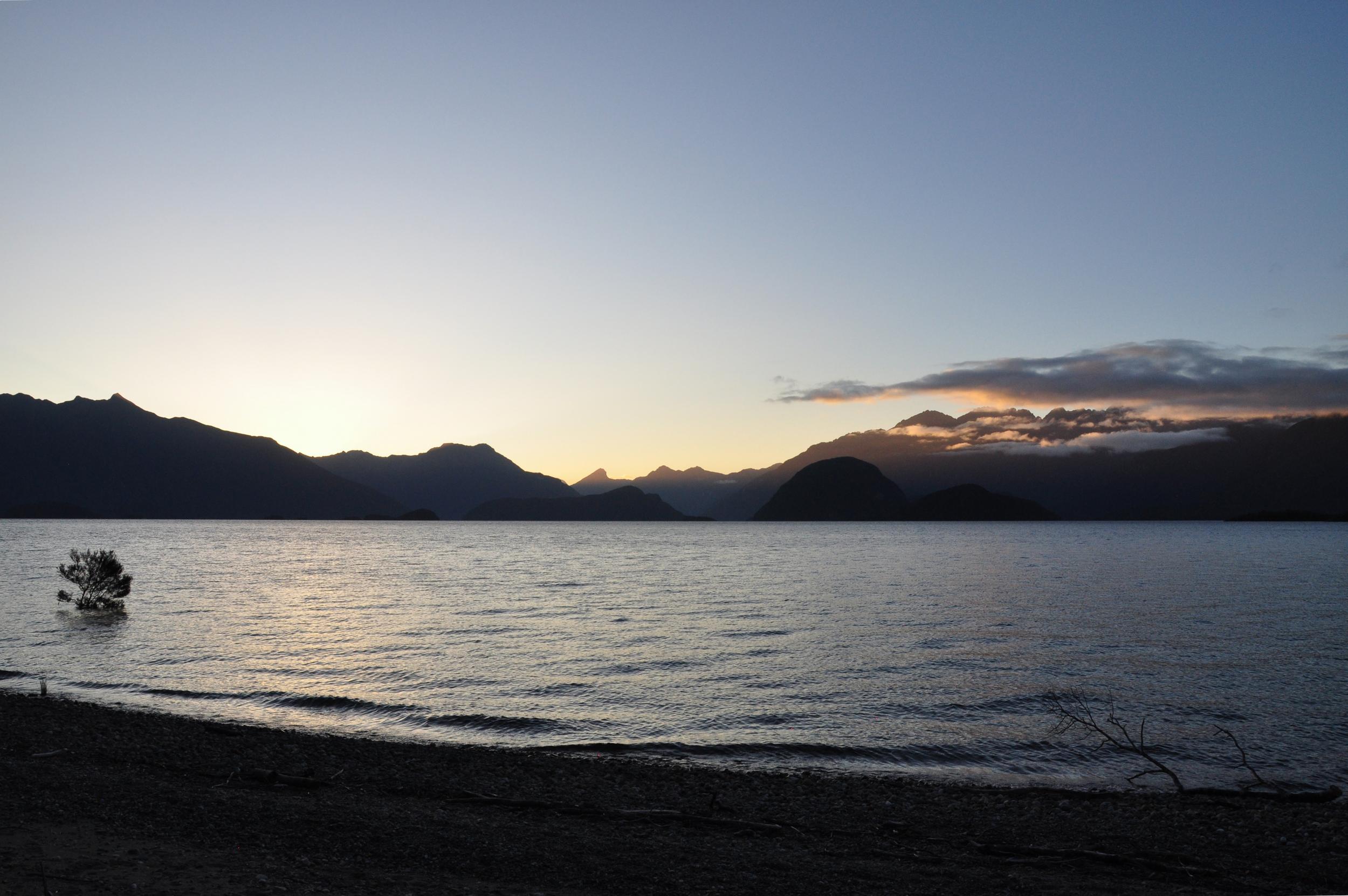
The wind had started to pick up throughout the afternoon and although it made for slightly tougher conditions for our final paddle into the beach, once we landed we were grateful that it was strong enough to keep the sandflies away. We felt pretty lucky to be able to enjoy a peaceful evening watching the sun set over the surrounding mountains.
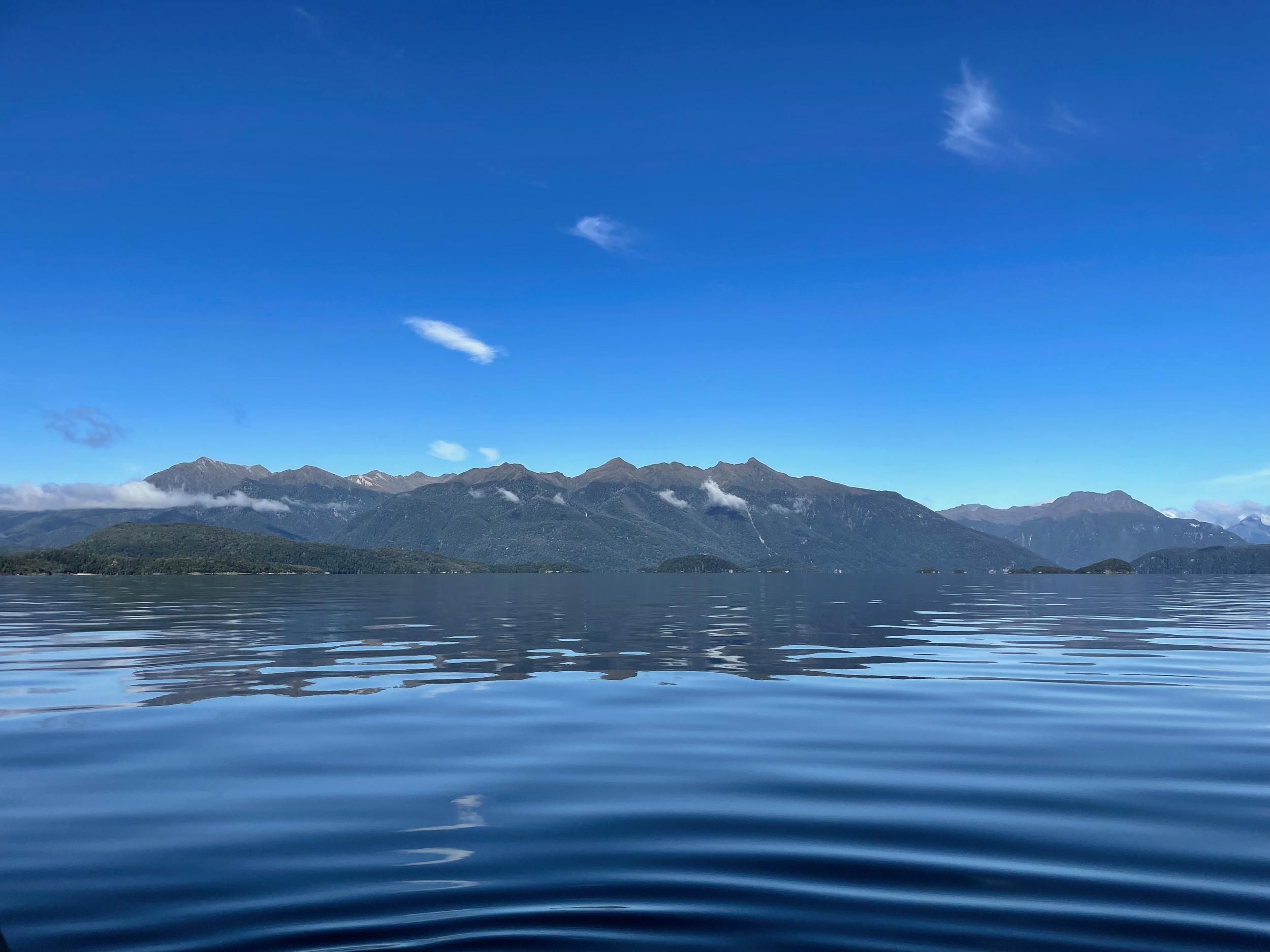
The next morning dawned calm and clear, which made for great conditions as we paddled our way across the lake. We wove our way through a series of islands before stopping off at Belle Vue Island for a snack before continuing on towards the Hope Arm.

The naturally occurring lake is the second deepest in New Zealand (nearby Lake Hauroko is the deepest), however it is also used for hydroelectric power. As part of the management of the lake, not only are the water levels kept at approximately their natural height, but along much of shoreline we saw traps for longfin eel, which are captured and relocated past the dam.

With the afternoon breeze starting to really pick up, we were happy to paddle into the small beach in Rawiri Bay in the Hope Arm. Our plan for the afternoon was a short hike up a rock pinnacle called the Monument.
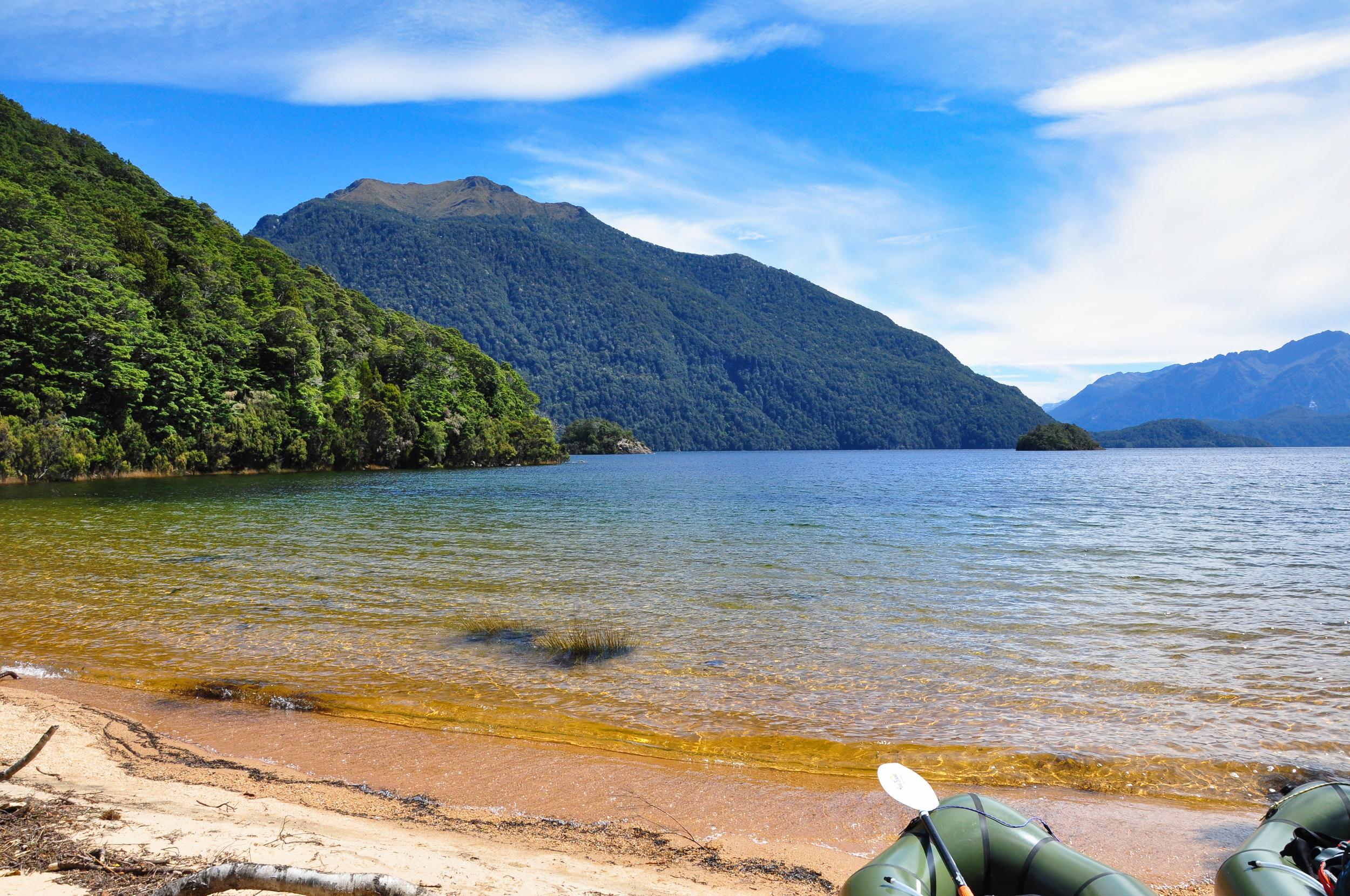
Anytime a track in New Zealand is described as steep with exposed sections by the Department of Conservation, you can guarantee it is going to be a bit of an adventure. The track climbed around 300 metres in about half a kilometer, resulting in several quite hairy scrambles. At one point we climbed through a rock chute using a chain anchored into the rocks to pull ourselves up! However the views from the top were well worth the effort and we were able to pick out the route we had paddled as well as the small beach where we had left our Packrafts.

By the time we got back down to our boats on the beach, the wind had picked up quite a bit and even the sheltered bay had some impressive waves with whitecaps. Looking around we spotted a nice flat area that would be perfect for pitching our tent and decided that this would be a great place to spend the night.
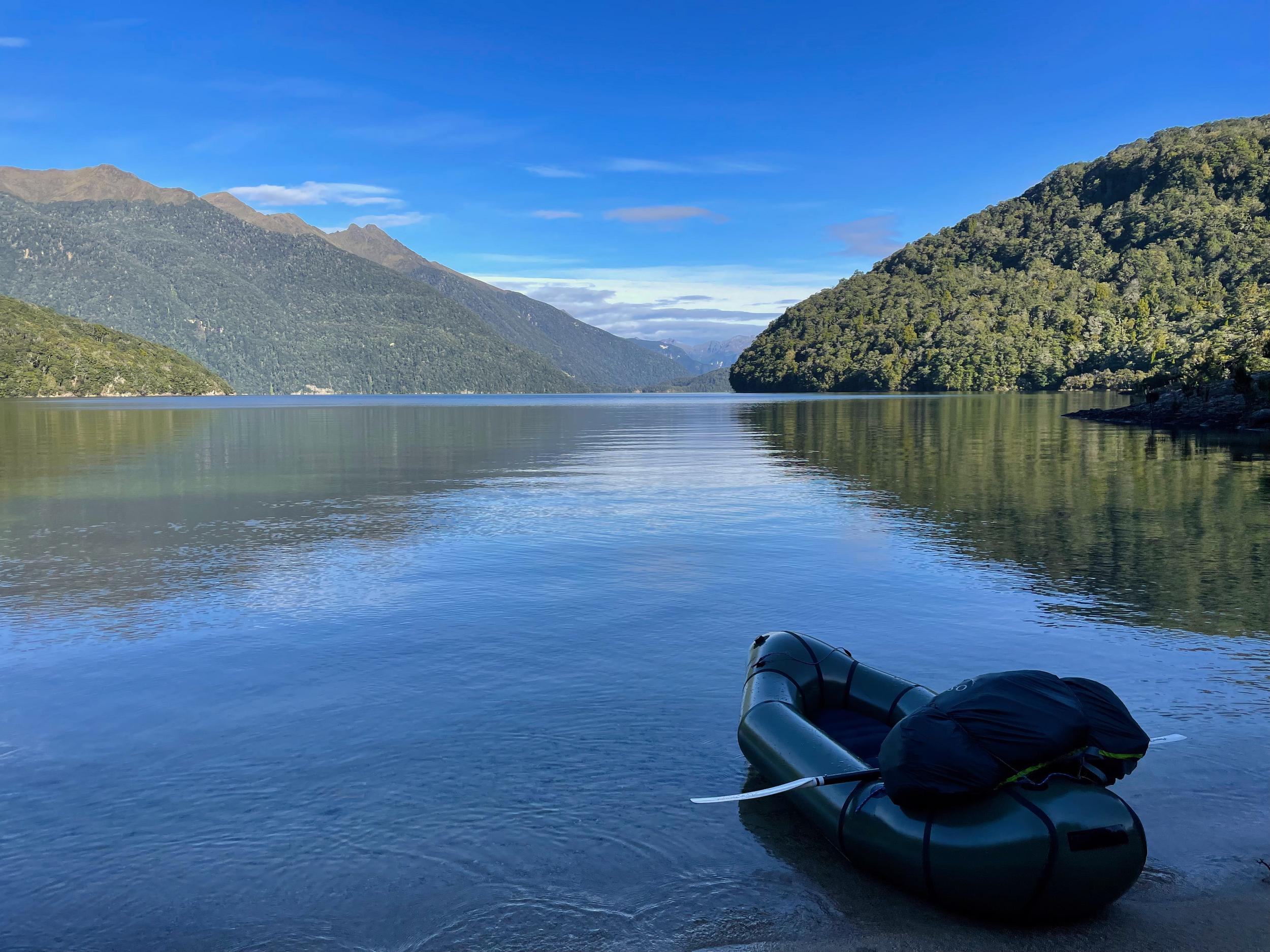
Luckily the wind calmed down again overnight and we woke to another beautifully clear morning. Sadly this meant that the sandflies were out in force so we quickly packed up and got out on the water to escape them. After a short paddle, we arrived at nearby George Bay where we took a short portage track through the forest. The lightweight but sturdy boats made it relatively easy going and we were soon on our way across the final section of the lake to the little township of Manapouri where we had left the car.
